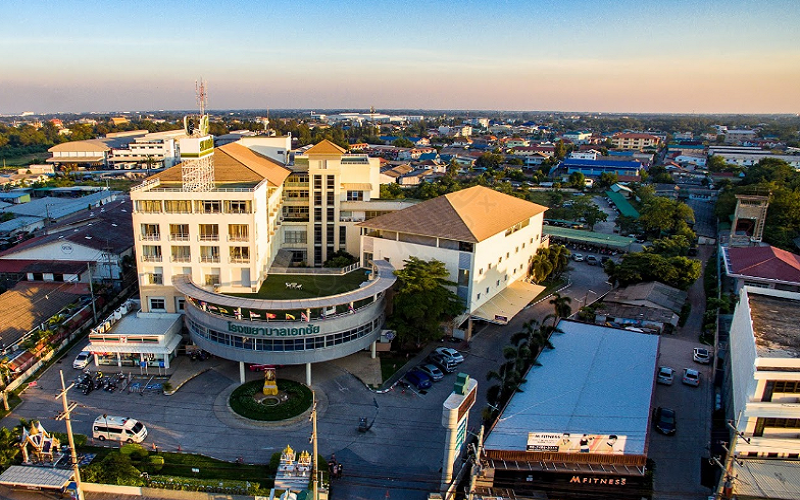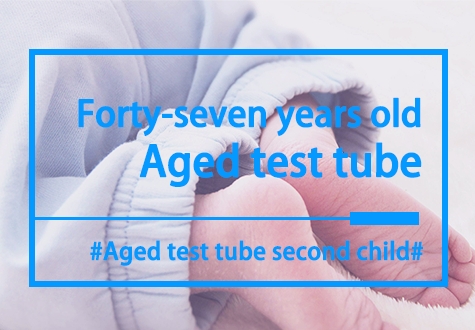Present situation, development and prospect of assisted reproductive technology in China
Promoting assisted reproduction service projects and improving the level of assisted reproduction has become an important issue of social concern. Recently, the reporter visited the exploration and practice of assisted reproduction in China and found that with the significant improvement of the technical level, assisted reproduction is becoming an important way to solve the fertility problem.

Give birth to family "birth" machine
Population is a basic, overall, long-term and strategic factor for national development, and population has a comprehensive, long-term and profound impact on the economic and social system. In recent years, the state has issued many policies to encourage fertility, but there are still some people who have the problem of "unable to give birth, poor birth", and assisted reproductive medical services have become a new choice for these people.
Assisted reproductive technology is an important method to treat infertility, it refers to the use of medical assistance to help infertile couples pregnancy technology, including artificial insemination, gamete transfer, in vitro fertilization, embryo transfer and test-tube baby technology.
Research reports show that the main treatment methods of infertility include conventional drug treatment, surgical treatment and assisted reproductive technology treatment. Assisted reproduction is the ultimate treatment for infertility when conventional drugs and surgery are unable to achieve natural conception.
Old mother Ashu (a pseudonym) and her husband have been married for many years, and they have been busy with work and have no time to think about childbirth. When she suddenly found herself closer and closer to the label of "advanced maternal age", she began to seriously prepare for pregnancy, but she worked hard for more than a year without any movement. After learning about New Bonn's consultation and assisted reproduction business through partners, Ashu experienced many years of long pregnancy preparation and successfully gave birth to a 6 kg baby.
In recent years, the industry around the discussion of assisted reproduction is always constant: on the one hand, the overall decline trend of national fertility is increasingly significant, data show that the incidence of infertility in China has risen from 12% in 2007 to 18% in 2020, about more than 33 million couples in the country are facing infertility problems; On the other hand, related tumor diseases show a younger trend, resulting in more and more people who lose fertility. According to statistics, from 2018 to 2020, there are more than 40,000 new cancer patients in children and adolescents every year on average, while the number of new tumors in women of childbearing age accounts for 12% of the overall number, of which more than 70% of young patients have fertility intentions.
In addition, statistics show that nearly 3% of babies in China have been born through assisted reproductive technology. With the increase of infertility rate, the support of the national fertility policy, the promotion of assisted reproductive technology, etc., the assisted reproductive industry has gradually developed and expanded in recent years.
Technology iteration upgrade
The continuous improvement of assisted reproductive industry technology has enabled more and more infertility patients, groups with serious genetic diseases, serious physical diseases, and mental and psychological disorders that are not suitable for reproduction to achieve normal fertility.
Zhang Yanlei, head of New Bonn Medical, said that the development of assisted reproductive technology in China is very rapid and has been in line with international standards. Assisted reproductive technology in China is equivalent to the advanced level of foreign countries, and indicators such as clinical pregnancy rate and live birth rate have reached a high level. In terms of assisted reproduction related drugs, reagents, equipment, etc., the degree of localization is also gradually improving. Years of clinical practice have proved that assisted reproductive technology has matured and is no different from natural conception in terms of maternal safety and the incidence of birth defects in newborns.
Zhang Yanlei said that at present, domestic head companies have completed overseas layout and formed a global medical network. Taking New Born as an example, the team has been deeply engaged in the assisted reproduction industry for more than 10 years. In addition to owning a large number of top three hospital medical resources in China, it has also reached strategic cooperation with many hospitals at home and abroad, and can conduct round-the-day consultation with professional medical technical teams in Europe and the United States and IVF experts with rich clinical practice experience online and offline. So far, New Born has helped more than 500 families to have their own babies.
It is reported that in order to reduce the psychological and economic pressure on childbearing families, new Born has specially established the Sansheng pregnant brand, responsible for the whole cycle of IVF health management services, and jointly established the first domestic assisted reproductive industry IVF whole cycle health management service enterprise standard with the China Eugenical and Healthy Education Association, and jointly launched the baby insurance business with Sunshine Insurance.
While the technology of assisted reproduction industry continues to improve, the value of professional institutions has also begun to highlight and gradually be recognized by the market.
"While improving on assisted reproductive technology, domestic head medical assisted reproductive enterprises are also actively laying out overseas, learning the technology and experience of overseas medical industry, achieving internal and external linkage, complementing each other technologically and learning from each other." Three Sheng pregnant person Gao Han said.
In order to enable assisted reproductive technology to better serve the groups in need, Zhang Ke, director of the National Medical Insurance Administration, said in Beijing some time ago that the National Medical Insurance Administration will continue to guide relevant provinces to further improve the project establishment of assisted reproductive medical services and medical insurance payment management, and strengthen departmental coordination to promote basic medical insurance, maternity insurance and related economic and social policies. We will work together to promote long-term and balanced population development.
Solve social problems
In recent years, many places have included assisted reproduction medical programs in the coverage of medical insurance, which has greatly reduced the cost of childbirth and eased the economic burden of related families.
In 2023, Beijing and Guangxi provinces took the lead in incorporating assisted reproductive technology into medical insurance. In March this year, the Shandong Provincial Medical Insurance Bureau issued a notice that from April 1, the current price of assisted reproductive medical services in Shandong Province will be standardized and integrated, and some items will be newly included in medical insurance payments. The medical insurance departments of Jiangsu, Shenzhen and other provinces and cities also proposed in response to the demands of people's livelihood that they are studying or actively promoting the introduction of relevant policies and measures.
According to the data released by the National Health Commission and the China Population Association, the penetration rate of China's assisted reproduction market in 2021 is 8.2%, and the penetration rate of assisted reproduction in the United States is 32% in 2021. There is huge space for development in the field of assisted reproduction in China. With the official landing of assisted reproductive technology treatment services in medical insurance, the penetration rate of the domestic assisted reproductive market is expected to further increase.
According to experts, the infertility rate caused by lifestyle changes and environmental factors has been on the rise. At present, the post-90s and post-00s are the new subjects of marriage and childbearing, most of them grow up and work in cities and towns, have longer years of education, face greater pressure of employment competition, and delay marriage and childbearing is common. Data from the Reproductive Medicine Center of the Obstetrics and Gynecology Hospital Affiliated to Zhejiang University School of Medicine show that the average age of patients in 2022 is 33.4 years old, an increase of 1.5 years compared with 2019; Among them, the number of patients over the age of 40 increased by 48%.
Driven by multiple favorable factors such as policy support, rising demand and increasing public awareness, assisted reproduction has become a rising tuyere industry. Reports show that in 2020, the size of China's assisted reproductive market is 43.4 billion yuan, and it is expected that by 2025, the size of China's assisted reproductive market will reach 85.4 billion yuan. Today, China's assisted reproductive industry will usher in a larger market expansion, and the market size of the assisted reproductive industry will continue to rise. (Article from the Internet, censored)














